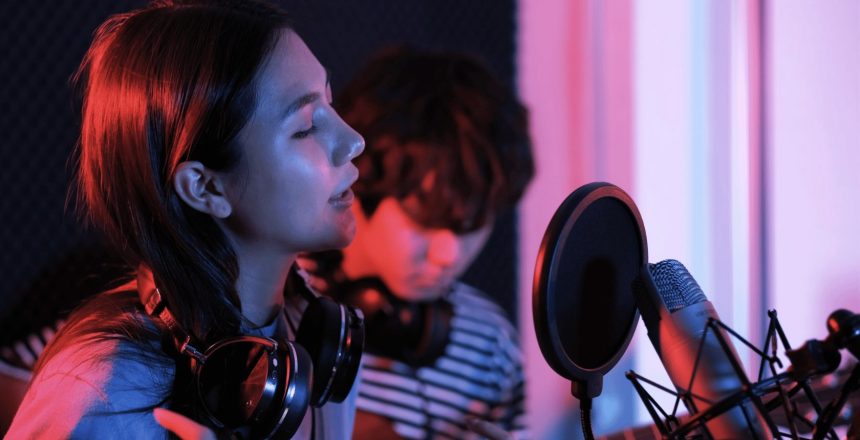If you want to unlock your full potential as a musician, it’s important to be familiar with different types of chords and how to spell them. Understanding chord names such as Bdim7 can help you communicate better with other musicians, and also make it easier to learn and play new music. In this ultimate chord guide for MelodyStudio, we’ll go over the different types of chords and how to write them so that you can use them to create professional-sounding songs.
Firstly, if you’re new to chords, let’s talk a little about what a chord is and its role in a song (you can skip this part if you’re already familiar). A chord is a combination of three or more notes played simultaneously. In music theory, chords are the building blocks of harmony and are used to create chord progressions that provide the backbone of a song. Chord progressions are a series of chords played in a specific order, and they provide the harmonic framework that supports the melody of a song. The chords in a progression work together to create tension and resolution, creating a sense of movement and emotion in the music.
Now that we know what chords are, here is a list of chords part of our chord guide for MelodyStudio:
Major: a chord built on the 1st, 3rd, and 5th notes of the major scale. Notated as a capital letter (e.g. C).
Minor: a chord built on the 1st, flat 3rd, and 5th notes of the major scale. Notated as a lowercase letter with “m” (e.g. Am).
Augmented: a chord with a raised 5th note. Notated with a “+” symbol or “aug” after the capital letter (e.g. C+, Caug).
Diminished: a chord with a lowered 3rd and 5th notes. Notated with a “°” or “dim” symbol (e.g. C° or Cdim).
Suspended 2nd: a chord where the 3rd is replaced with the 2nd note of the major scale. Notated with “sus2” (e.g. Csus2).
Suspended 4th: a chord where the 3rd is replaced with the 4th note of the major scale. Notated with “sus4” (e.g. Csus4).
Power chord: a chord with only the root and fifth notes. Notated with a “5” (e.g. C5).
Major 6th: Root, Major 3rd, Perfect 5th, Major 6th (e.g. C6: C-E-G-A)
Minor 6th: Root, Minor 3rd, Perfect 5th, Major 6th (e.g. Am6: A-C-E-F#)
Dominant 7th: a chord built on the 1st, 3rd, 5th, and flat 7th notes of the major scale. Notated with “7” (e.g. C7).
Major 7th: a chord built on the 1st, 3rd, 5th, and 7th notes of the major scale. Notated with “maj7” or “M7” (e.g. Cmaj7).
Minor 7th: a chord built on the 1st, flat 3rd, 5th, and flat 7th notes of the major scale. Notated with “m7” (e.g. Cm7).
Diminished 7th: a chord with lowered 3rd, 5th, and double-flat 7th notes. Notated with “°7” or “dim7” (e.g. C°7 or Cdim7).
Half-diminished 7th: a chord with lowered 3rd, 5th, and flat 7th notes. Notated with “ø7” or “m7b5” (e.g. Cø7 or Cm7b5).
Augmented 7th: a chord with raised 5th and 7th notes. Notated with “+7” or “7#5” (e.g. C+7 or C7#5).
Add 9: a chord with the addition of the 9th note of the major scale. Notated with “add9” (e.g. Cadd9).
Major 9th: a chord built on the 1st, 3rd, 5th, 7th, and 9th notes of the major scale. Notated with “M9” or “maj9” (e.g. CM9 or Cmaj9).
Minor 9th: a chord built on the 1st, flat 3rd, 5th, flat 7th, and 9th notes of the major scale. Notated with “m9” (e.g. Cm9).
Add 11: a chord with the addition of the 11th note of the major scale. Notated with “add11” (e.g. Cadd11).
Major 11th: Root, Major 3rd, Perfect 5th, Major 7th, Major 9th, Perfect 11th (e.g. Cmaj11: C-E-G-B-D-F)
Minor 11th: Root, Minor 3rd, Perfect 5th, Minor 7th, Major 9th, Perfect 11th (e.g. Am11: A-C-E-G-B-D)
That is all for our Ultimate Chord Guide for MelodyStudio! While there are infinitely more possibilities of chords, these are the main chords that you may need to know when using MelodyStudio. Be sure to type these chords into the workspace or the generator to test how they sound, and think about how you would like to use it in your songs. While trying out MelodyStudio, also check out its lyrical counterpart, LyricStudio as well. Happy writing!





